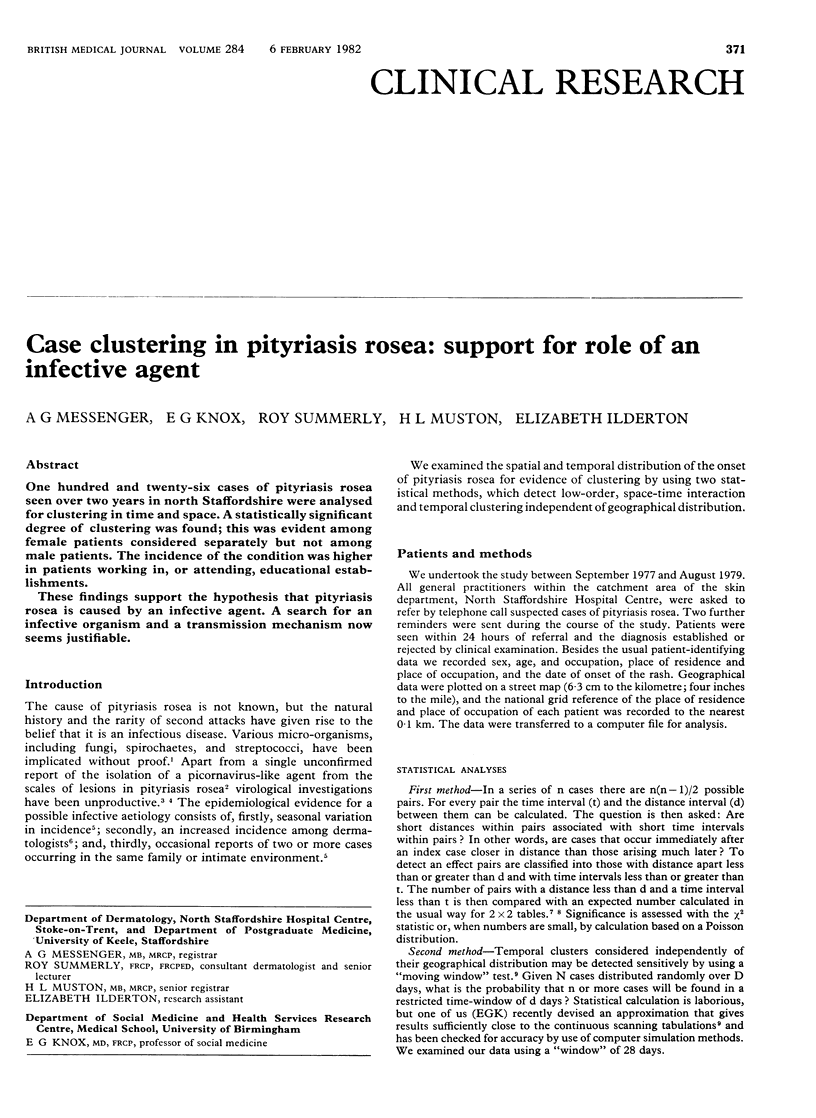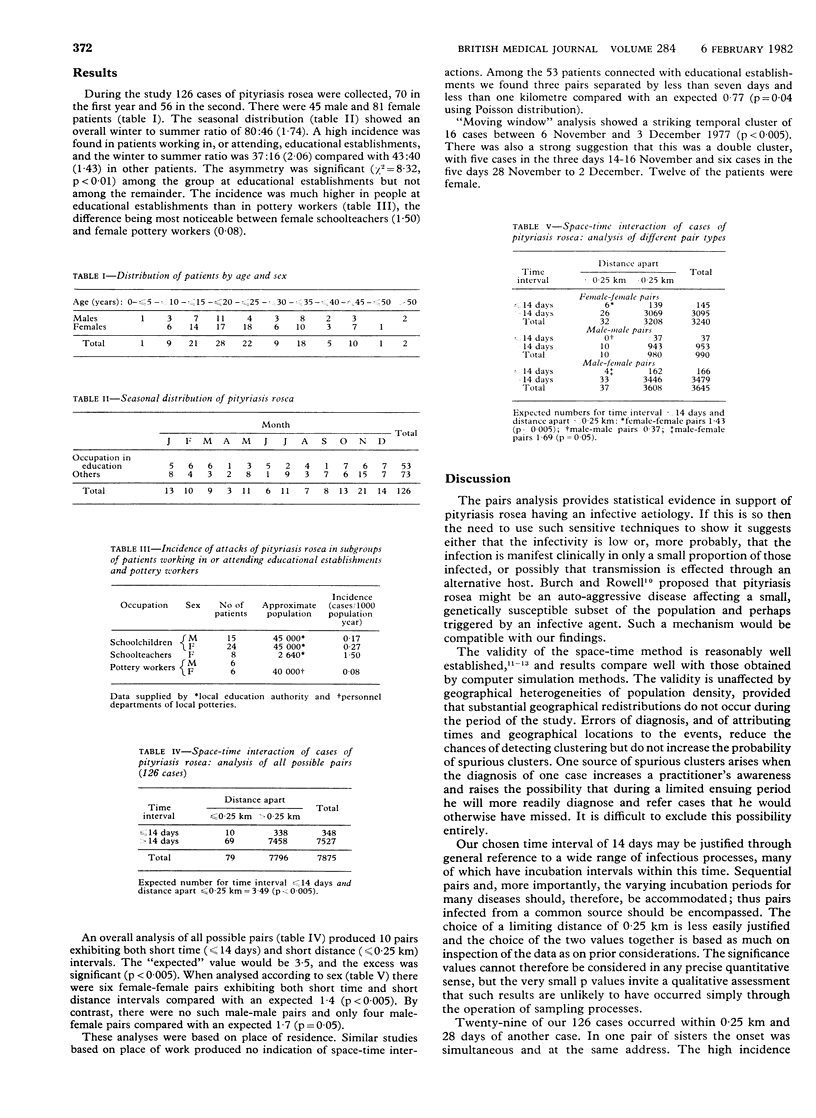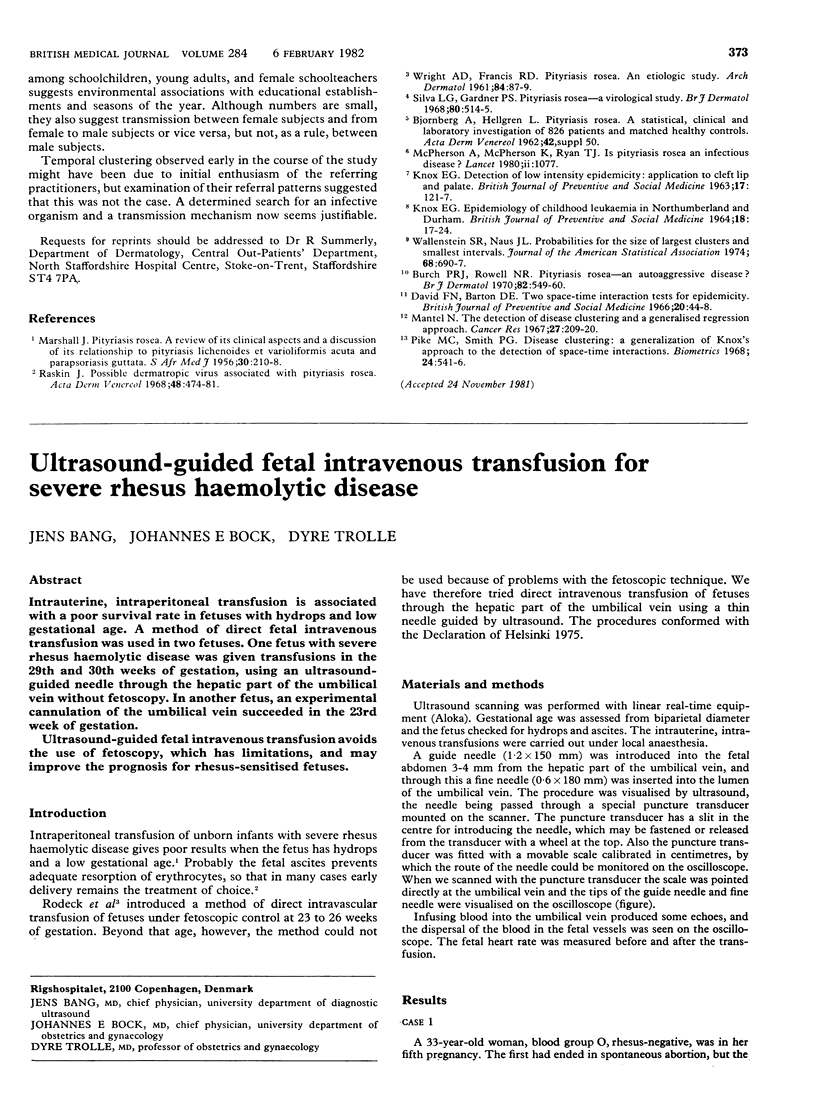Abstract
One hundred and twenty-six cases of pityriasis rosea seen over two years in north Staffordshire were analysed for clustering in time and space. A statistically significant degree of clustering was found; this was evident among female patients considered separately but not among male patients. The incidence of the condition was higher in patients working in, or attending, educational establishments. These findings support the hypothesis that pityriasis rosea is caused by an infective agent. A search for an infective organism and a transmission mechanism now seems justifiable.
Full text
PDF


Selected References
These references are in PubMed. This may not be the complete list of references from this article.
- Burch P. R., Rowell N. R. Pityriasis rosea--an autoaggressive disease? Statistical studies in relation to aethiology and pathogenesis. Br J Dermatol. 1970 Jun;82(6):549–560. doi: 10.1111/j.1365-2133.1970.tb06095.x. [DOI] [PubMed] [Google Scholar]
- Garcia e Silva L., Gardner P. S. Pityriasis rosea-a virological study. Br J Dermatol. 1968 Aug;80(8):514–515. doi: 10.1111/j.1365-2133.1968.tb12339.x. [DOI] [PubMed] [Google Scholar]
- KNOX G. DETECTION OF LOW INTENSITY EPIDEMICITY: APPLICATION TO CLEFT LIP AND PALATE. Br J Prev Soc Med. 1963 Jul;17:121–127. doi: 10.1136/jech.17.3.121. [DOI] [PMC free article] [PubMed] [Google Scholar]
- KNOX G. EPIDEMIOLOGY OF CHILDHOOD LEUKAEMIA IN NORTHUMBERLAND AND DURHAM. Br J Prev Soc Med. 1964 Jan;18:17–24. doi: 10.1136/jech.18.1.17. [DOI] [PMC free article] [PubMed] [Google Scholar]
- MARSHALL J. Pityriasis rosea; a review of its clinical aspects and a discussion of its relationship to pityriasis lichenoides et varioliformis acuta and parapsoriasis guttata. S Afr Med J. 1956 Mar 3;30(9):210–218. [PubMed] [Google Scholar]
- Mantel N. The detection of disease clustering and a generalized regression approach. Cancer Res. 1967 Feb;27(2):209–220. [PubMed] [Google Scholar]
- McPherson A., McPherson K., Ryan T. Is pityriasis rosea an infectious disease? Lancet. 1980 Nov 15;2(8203):1077–1077. doi: 10.1016/s0140-6736(80)92293-x. [DOI] [PubMed] [Google Scholar]
- Pike M. C., Smith P. G. Disease clustering: a generalization of Knox's approach to the detection of space-time interactions. Biometrics. 1968 Sep;24(3):541–556. [PubMed] [Google Scholar]
- Raskin J. Possible dermatropic virus associated with pityriasis rosea. Preliminary study. Acta Derm Venereol. 1968;48(5):474–481. [PubMed] [Google Scholar]
- WRIGHT A. D., FRANCIS R. D. Pityriasis rosea. An etiologic study. Arch Dermatol. 1961 Jul;84:87–89. doi: 10.1001/archderm.1961.01580130093013. [DOI] [PubMed] [Google Scholar]


